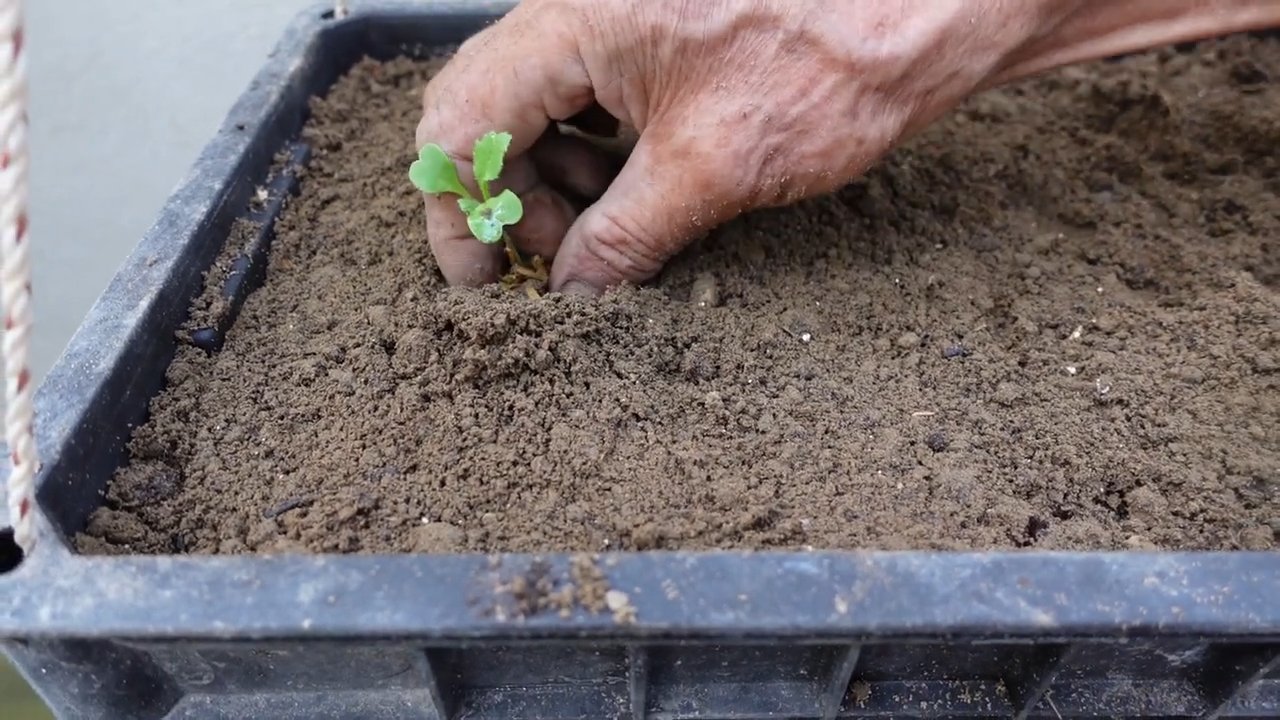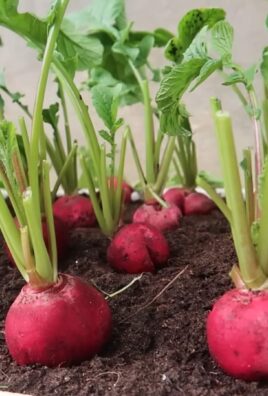Easy to grow vegetables – that’s the dream, isn’t it? Imagine stepping into your backyard and harvesting fresh, flavorful produce for your dinner table. No more questionable supermarket veggies; just vibrant, homegrown goodness. But the thought of starting a garden can feel overwhelming. Where do you even begin? Don’t worry, I’m here to tell you that cultivating your own little Eden is easier than you think!
For centuries, humans have nurtured gardens, from the hanging gardens of Babylon to the humble kitchen gardens of our grandparents. Growing your own food connects you to this rich history, a tradition of self-sufficiency and a deep appreciation for the natural world. But in today’s fast-paced world, many of us have lost touch with this essential skill. We rely on grocery stores, often unaware of where our food comes from or how it’s grown.
That’s where these DIY home gardening tricks come in. I’m going to share some simple, effective hacks that will help you cultivate a thriving vegetable garden, even if you have limited space, time, or experience. We’ll explore clever techniques for maximizing your yield, protecting your plants from pests, and making the most of your resources. Learning which easy to grow vegetables thrive in your climate and how to care for them is the first step towards a healthier, more sustainable lifestyle. So, grab your gardening gloves, and let’s get started!

Vegetable Garden for Beginners: Easy-to-Grow Varieties for the Self-Sufficient
Hey dears! Have you ever dreamed of having your own little vegetable garden? Fresh vegetables straight from the patch to the plate – sounds fantastic, doesn’t it? I’ll show you how you can get started easily, even if you don’t have a green thumb yet. We’ll focus on vegetable varieties that are super easy to care for and are successful even for beginners. Let’s go!
The Preparation: The Right Location and the Right Soil
Before we start planting, we need to take care of the basics. The location and the soil are crucial for the success of your vegetable garden.
- The location: Most vegetable varieties love the sun. So, find a spot that gets at least six hours of sunlight a day. Also, make sure the location is sheltered from the wind so your plants don’t get knocked over.
- The soil: Vegetables need nutrient-rich soil. It’s best if you improve the soil with compost or well-rotted manure before planting. This loosens the soil and provides your plants with important nutrients. If your soil is very clay-heavy, you can also mix in some sand to make it more permeable.
The Selection of Vegetable Varieties: Beginner-Friendly Stars
Now comes the fun part: choosing the vegetable varieties! I’ve put together a list of vegetable varieties for you that are particularly easy to grow and are also successful for beginners:
- Lettuce: Lettuce is super easy and fast-growing. You can either buy it as seedlings or sow it directly. Be sure to try different varieties to bring variety to your plate.
- Radishes: Radishes are the sprinters among vegetable varieties. They germinate quickly and are ready to harvest after just a few weeks. Perfect for impatient gardeners!
- Zucchini: Zucchini are true growth wonders. A single plant can provide you with a huge harvest. Be sure to give them enough space, as they can get quite large.
- Bush beans: Bush beans are robust and easy to care for. They don’t need a trellis and provide a rich harvest.
- Swiss chard: Swiss chard is a great leafy green that can be harvested all summer long. It is very resilient and can also cope with a little less sun.
- Head lettuce: Head lettuce is a classic and easy to grow. Be sure to water it regularly so it doesn’t become bitter.
- Spinach: Spinach is a healthy leafy green that grows quickly. You can harvest it several times by cutting only the outer leaves.
- Beetroot: Beetroot is a robust root vegetable that stores well. You can eat both the tubers and the leaves.
- Carrots: Carrots are a bit more demanding, but with the right preparation, they can also be grown by beginners. Make sure the soil is loose and free of stones so the roots can develop well.
- Herbs: Herbs are a must in any vegetable garden! Basil, parsley, chives, and company are not only delicious but also easy to care for and attract beneficial insects.
Sowing and Planting: Step-by-Step to Your Own Vegetables
Now let’s get down to it! Here are the individual steps on how to sow and plant your vegetables:
Sowing Indoors (Starting Seeds)
Some vegetable varieties, like tomatoes or peppers, take a little longer to grow. Therefore, it makes sense to start them indoors.
- Preparation: Get seed starting mix and small seed starting pots or a seed tray. Fill the pots with soil and moisten it slightly.
- Sowing: Place the seeds in the soil according to the package instructions. Cover them lightly with soil and press down gently.
- Care: Place the pots in a bright, warm place. Keep the soil moist, but not wet. After a few days, the first seedlings should be visible.
- Pricking out: When the seedlings are large enough (about 5-10 cm), you can prick them out into larger pots. This gives them more space to grow.
Sowing Outdoors
Some vegetable varieties, like lettuce or radishes, can be sown directly outdoors.
- Preparation: Loosen the soil in the bed and remove stones and weeds. Use a rake to make shallow furrows in the soil.
- Sowing: Place the seeds in the furrows according to the package instructions. Cover them lightly with soil and press down gently.
- Care: Water the soil gently and keep it moist until the seeds germinate. Make sure the soil does not dry out.
Planting Seedlings
If you don’t have the time or desire to sow yourself, you can also buy seedlings and plant them in the bed.
- Preparation: Loosen the soil in the bed and remove stones and weeds. Dig small holes that are slightly larger than the root balls of the plants.
- Planting: Carefully remove the plants from their pots and place them in the holes. Fill the holes with soil and press down gently.
- Care: Water the plants well and make sure the soil remains moist for the first few days.
The Care: Watering, Fertilizing, and Weeding
For your vegetables to grow well and provide a bountiful harvest, proper care is important.
- Watering: Vegetables need regular water, especially in dry weather. It’s best to water in the morning or evening so the water doesn’t evaporate as quickly. Be careful not to wet the leaves to prevent fungal diseases.
- Fertilizing: Vegetables need nutrients to grow. Fertilize your plants regularly with compost, horn shavings, or an organic fertilizer. Be sure to follow the manufacturer’s dosage recommendations.
- Weeding: Weeds compete with your vegetables for water and nutrients. Weed regularly to protect your plants. This is best done when the soil is moist.
- Pest control: Pests can also endanger your harvest. Check your plants regularly for pests and combat them if necessary with natural remedies, such as nettle tea or neem oil.
The Harvest: The Reward for Your Efforts
Finally, the time has come: The harvest! The timing of the harvest depends on the respective vegetable variety. Pay attention to the signs of ripeness and harvest your vegetables when they are ready.
Head lettuce: Head lettuce is ready to harvest when the head is firm and closed. Cut it off with a knife.
Lettuce: You can harvest lettuce as soon as the leaves are large enough. Cut the leaves with a knife or harvest the whole head.
Radishes: Radishes are ready to harvest when they have reached a size of about 2-3 cm. Simply pull them out of the ground.
Zucchini: You can harvest zucchini when they have reached a length of about 20-30 cm. Cut them off with a knife.
Bush beans: Bush beans are ready to harvest when the pods are plump. Simply pick them.
Swiss chard: You can harvest Swiss chard all summer long by always cutting only the outer leaves.

Conclusion
So, there you have it! Mastering the art of growing your own vegetables doesn’t require acres of land or years of experience. With a little planning and these simple DIY tricks, you can transform even the smallest space into a thriving edible garden. We’ve shown you how to select the easiest vegetables to grow, prepare your soil for success, and implement clever techniques for maximizing your yield.
But why is this a must-try? Beyond the obvious benefits of fresh, organic produce at your fingertips, growing your own vegetables is incredibly rewarding. It connects you to nature, reduces your carbon footprint, and provides a sense of accomplishment that’s hard to beat. Plus, you’ll know exactly what’s going into your food, free from harmful pesticides and chemicals.
Don’t be afraid to experiment! Try different varieties of the vegetables we’ve mentioned. For example, instead of just growing standard tomatoes, explore heirloom varieties like Brandywine or Cherokee Purple for unique flavors and colors. If you’re short on space, consider vertical gardening with climbing beans or strawberries. You can also try companion planting, pairing vegetables that benefit each other, such as basil and tomatoes, to deter pests and improve growth. Another fun variation is to create a themed garden, like a salsa garden with tomatoes, peppers, onions, and cilantro, or a salad garden with lettuce, spinach, and radishes.
Remember, the key to success is observation and adaptation. Pay attention to your plants, learn their needs, and adjust your approach as necessary. Don’t get discouraged if you encounter challenges along the way. Gardening is a learning process, and every mistake is an opportunity to improve.
We are confident that with these tips, you can successfully cultivate a bountiful harvest of easy to grow vegetables. Now it’s your turn! Grab your gardening gloves, get your hands dirty, and experience the joy of growing your own food. We can’t wait to hear about your gardening adventures! Share your successes, challenges, and favorite tips in the comments below. Let’s build a community of thriving home gardeners!
Frequently Asked Questions (FAQ)
What are the absolute easiest vegetables for a complete beginner to grow?
For absolute beginners, we highly recommend starting with leafy greens like lettuce and spinach. They germinate quickly, grow relatively fast, and are quite forgiving. Radishes are another excellent choice, as they mature in just a few weeks. Bush beans are also easy to grow and produce a generous harvest. Finally, zucchini is known for its prolific growth, so be prepared for an abundance of this versatile vegetable! These are all great choices for those new to growing their own vegetables.
How much sunlight do these easy to grow vegetables need?
Most vegetables need at least 6 hours of direct sunlight per day to thrive. However, some leafy greens like lettuce and spinach can tolerate partial shade, especially in hotter climates. If you’re growing in containers, you can easily move them to follow the sun. Observe your plants closely and adjust their location as needed. If your plants are leggy and pale, they likely need more sunlight.
What kind of soil is best for growing vegetables?
Well-draining soil that is rich in organic matter is ideal for growing vegetables. You can improve your soil by adding compost, aged manure, or other organic amendments. A soil test can help you determine the pH level and nutrient content of your soil. Most vegetables prefer a slightly acidic soil pH between 6.0 and 7.0. You can purchase soil testing kits at most garden centers.
How often should I water my vegetables?
The frequency of watering depends on several factors, including the type of vegetable, the weather, and the soil. Generally, you should water deeply and less frequently, rather than shallowly and often. Water when the top inch of soil feels dry to the touch. Avoid overwatering, as this can lead to root rot. Mulching around your plants can help retain moisture and reduce the need for watering.
What are some common pests and diseases that affect vegetables, and how can I prevent them?
Common pests include aphids, slugs, and cabbage worms. Common diseases include powdery mildew and blight. To prevent pests and diseases, choose disease-resistant varieties, practice crop rotation, and keep your garden clean and free of debris. You can also use organic pest control methods, such as insecticidal soap or neem oil. Regularly inspect your plants for signs of pests or diseases and take action promptly.
Can I grow these vegetables in containers?
Yes, many vegetables can be successfully grown in containers. Choose containers that are large enough to accommodate the mature size of the plant. Make sure the containers have drainage holes to prevent waterlogging. Use a high-quality potting mix that is specifically formulated for vegetables. Water and fertilize your container-grown vegetables regularly, as they tend to dry out and deplete nutrients more quickly than those grown in the ground.
How do I know when my vegetables are ready to harvest?
The best way to determine when your vegetables are ready to harvest is to consult a gardening guide or seed packet for specific information on each vegetable. Generally, you should harvest vegetables when they are fully colored and have reached their mature size. Taste-testing is also a good way to determine ripeness. For example, tomatoes should be firm and slightly soft to the touch, while lettuce leaves should be crisp and tender.
What are some good companion plants for vegetables?
Companion planting involves growing different plants together that benefit each other. For example, basil is a good companion plant for tomatoes, as it repels pests and improves the flavor of the tomatoes. Marigolds are also effective at deterring pests. Carrots and onions are good companions, as the onions repel carrot flies. Research companion planting to find the best combinations for your garden.
How can I extend the growing season for my vegetables?
There are several ways to extend the growing season for your vegetables. You can start seeds indoors several weeks before the last frost. You can also use row covers or cold frames to protect your plants from frost. Succession planting, which involves planting crops at intervals throughout the growing season, can also help extend your harvest. Finally, you can choose varieties that are specifically bred for early or late maturity.
What if I don’t have a lot of space for a garden?
Even if you don’t have a lot of space, you can still grow your own vegetables. Consider growing in containers on a balcony or patio. Vertical gardening, using trellises or hanging baskets, is another great way to maximize space. You can also grow vegetables in raised beds, which require less space than traditional gardens. Even a small herb garden on a windowsill can provide fresh herbs for your meals. Remember, every little bit helps!




Leave a Comment